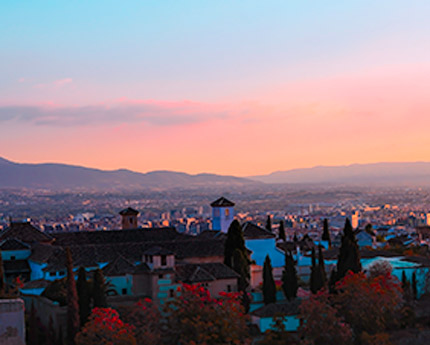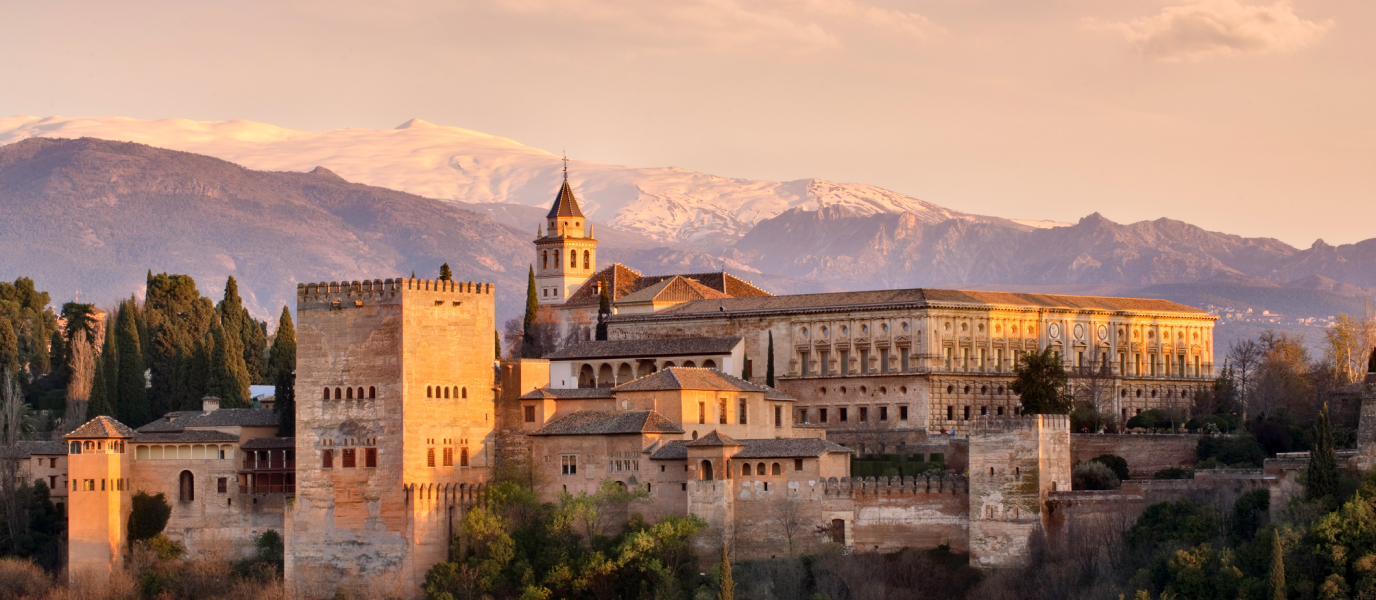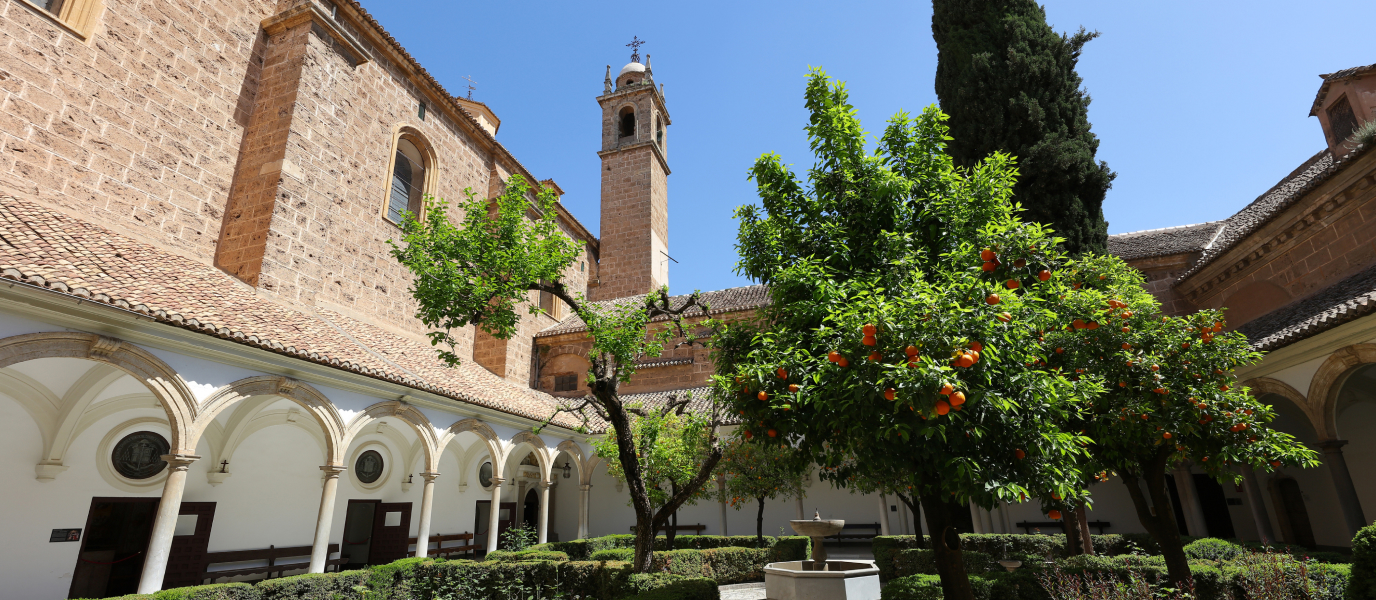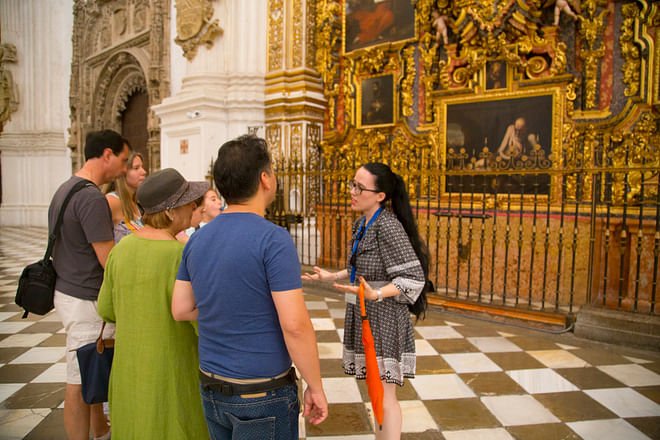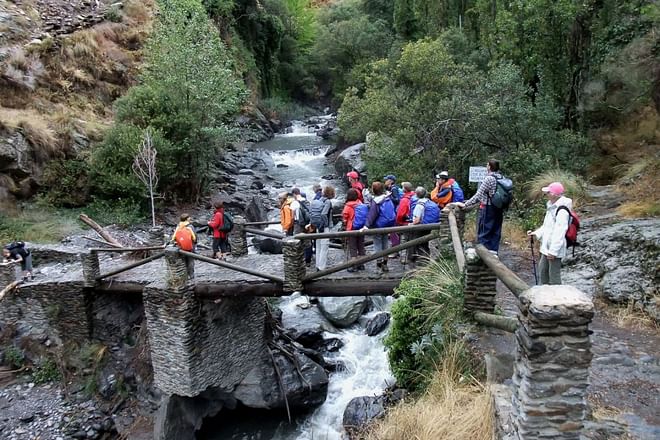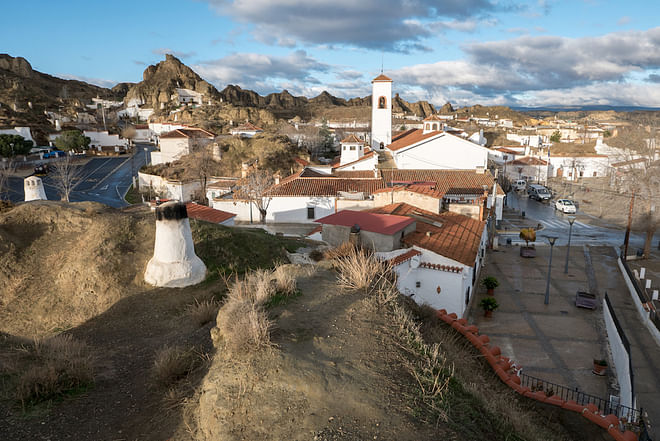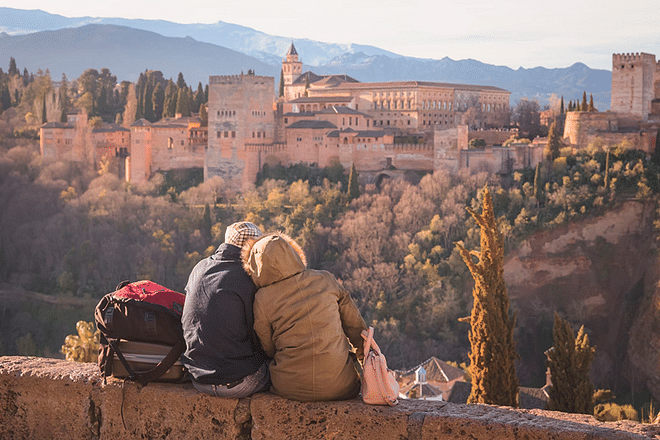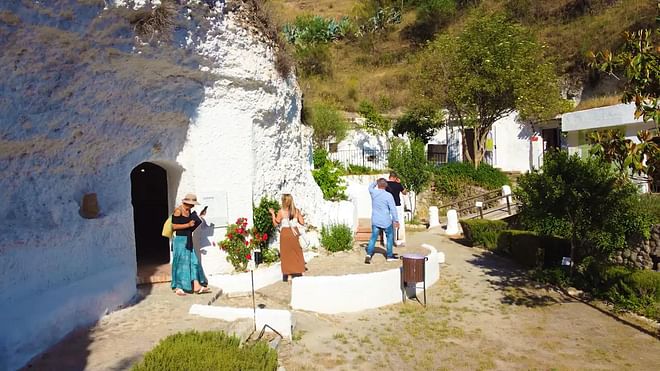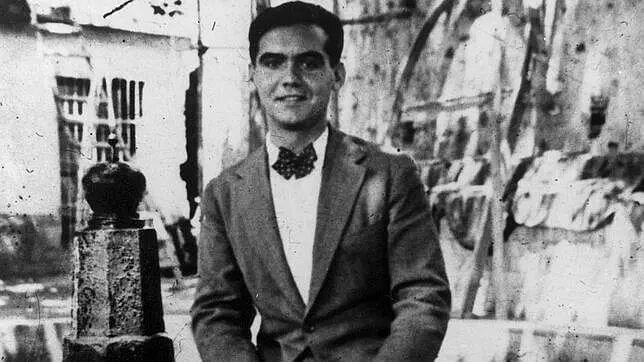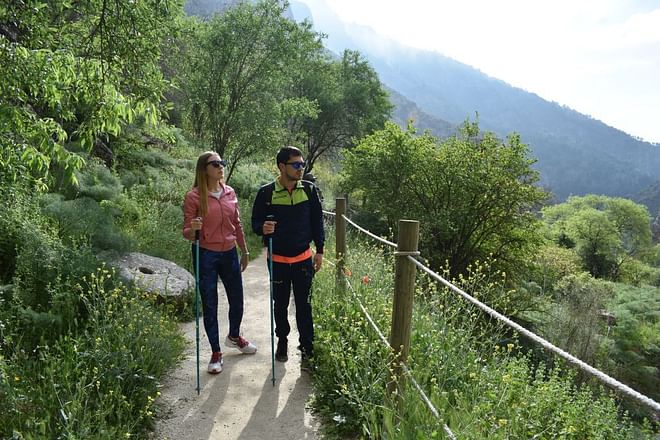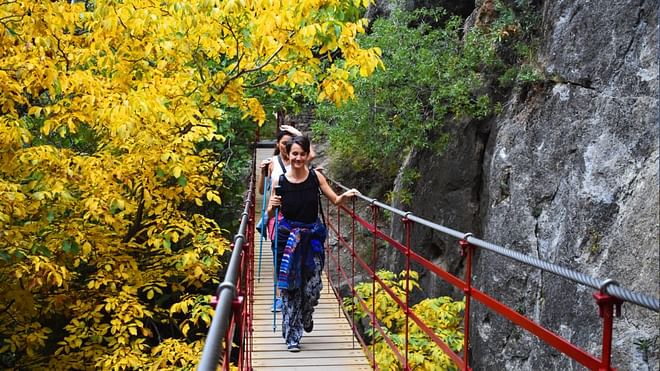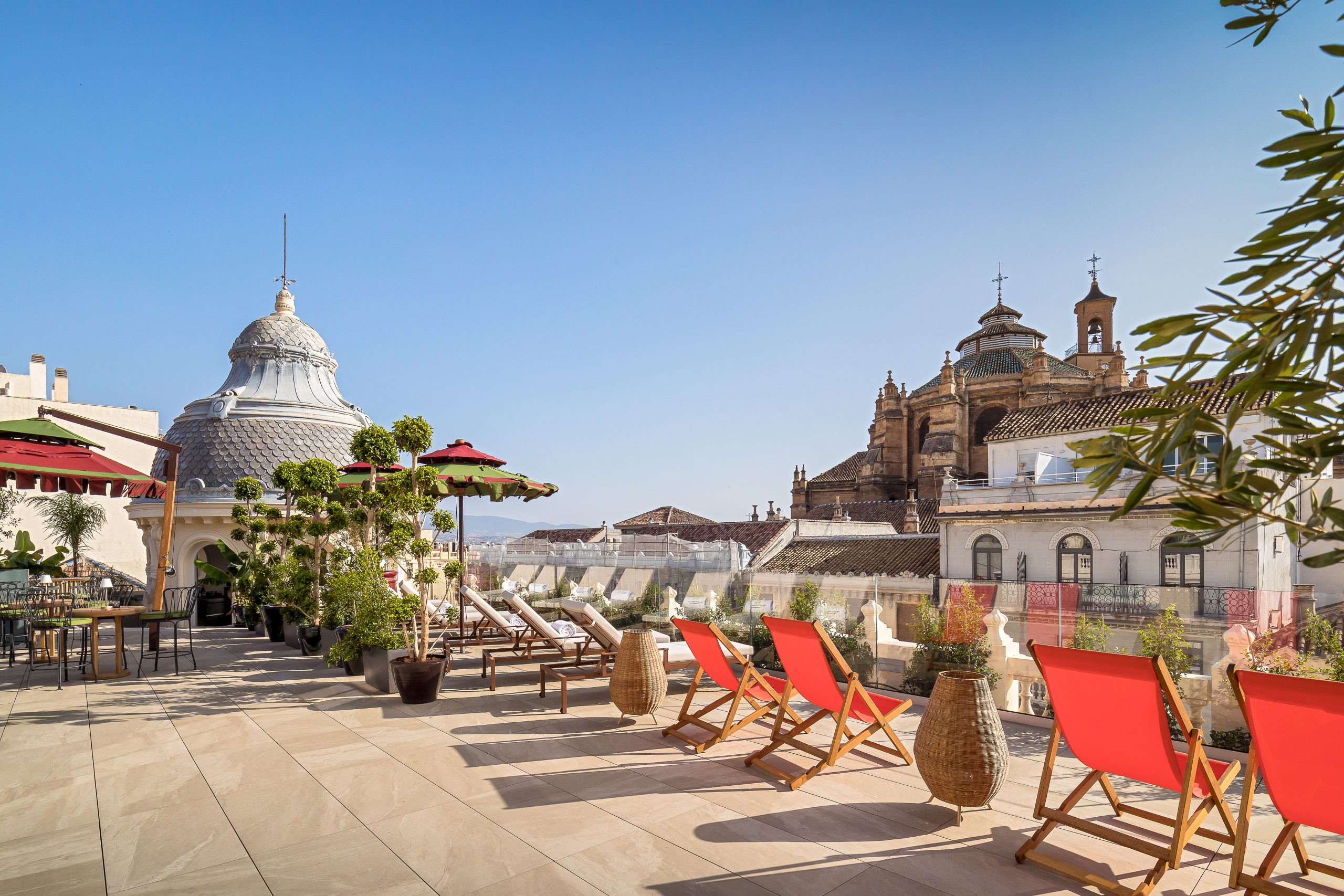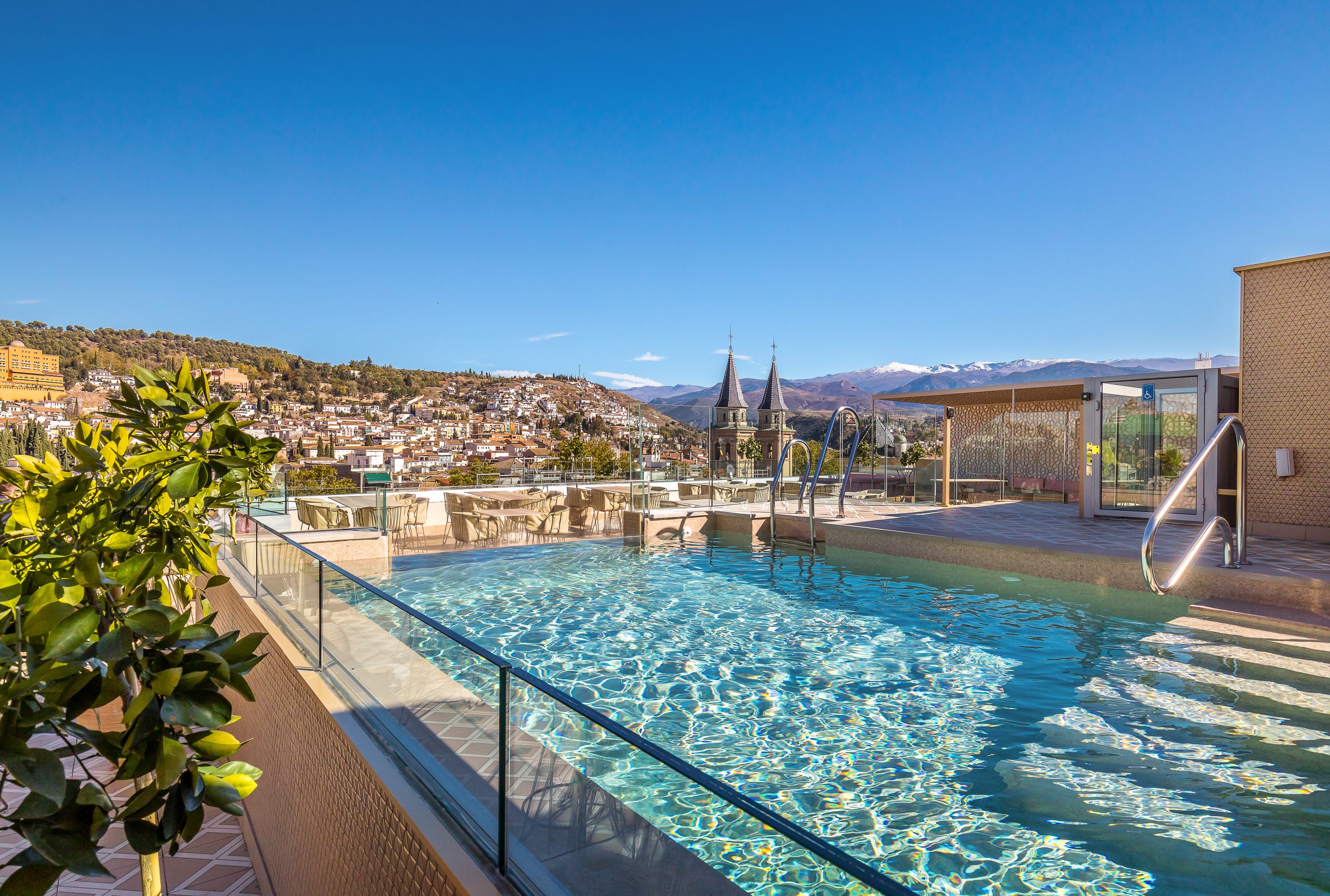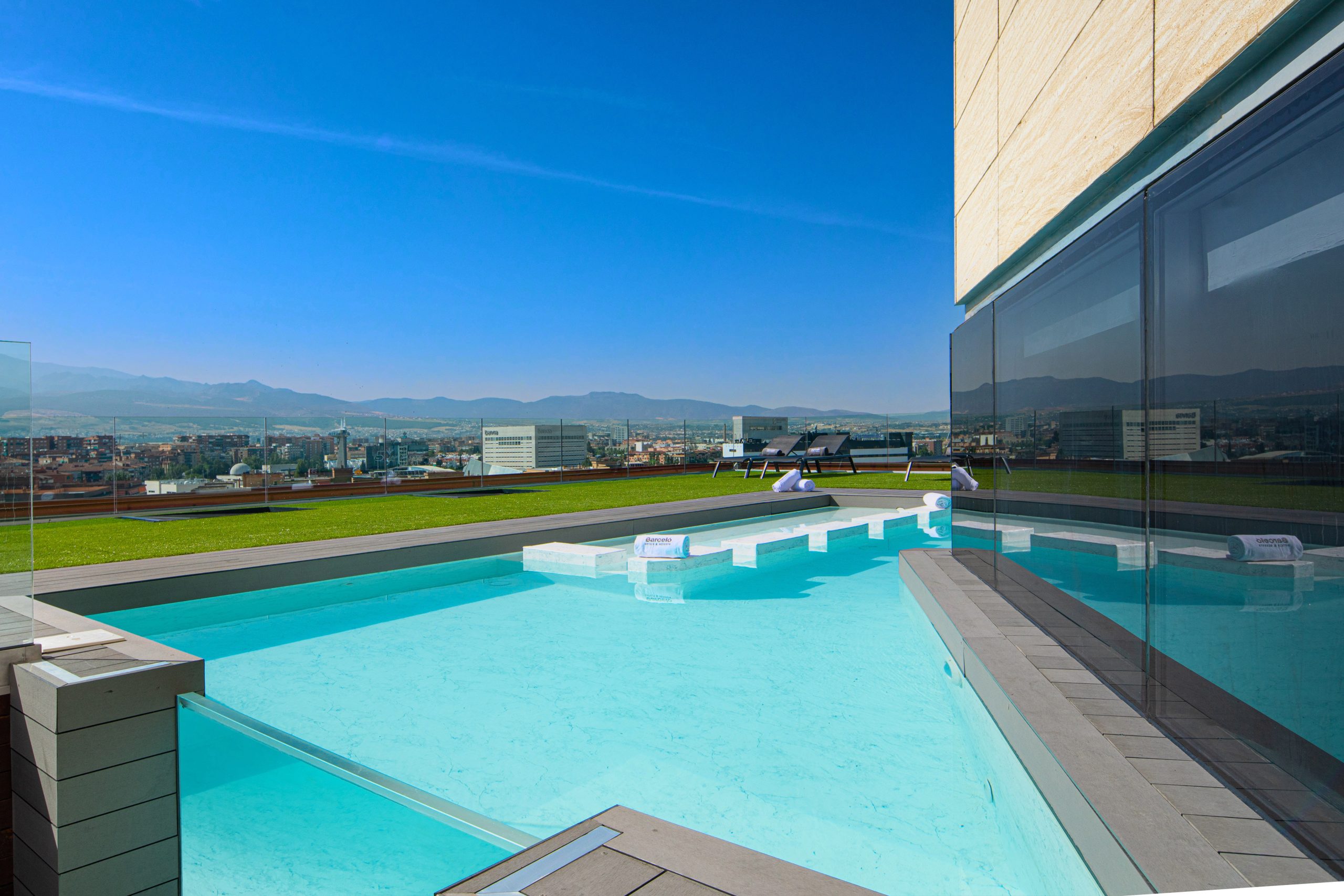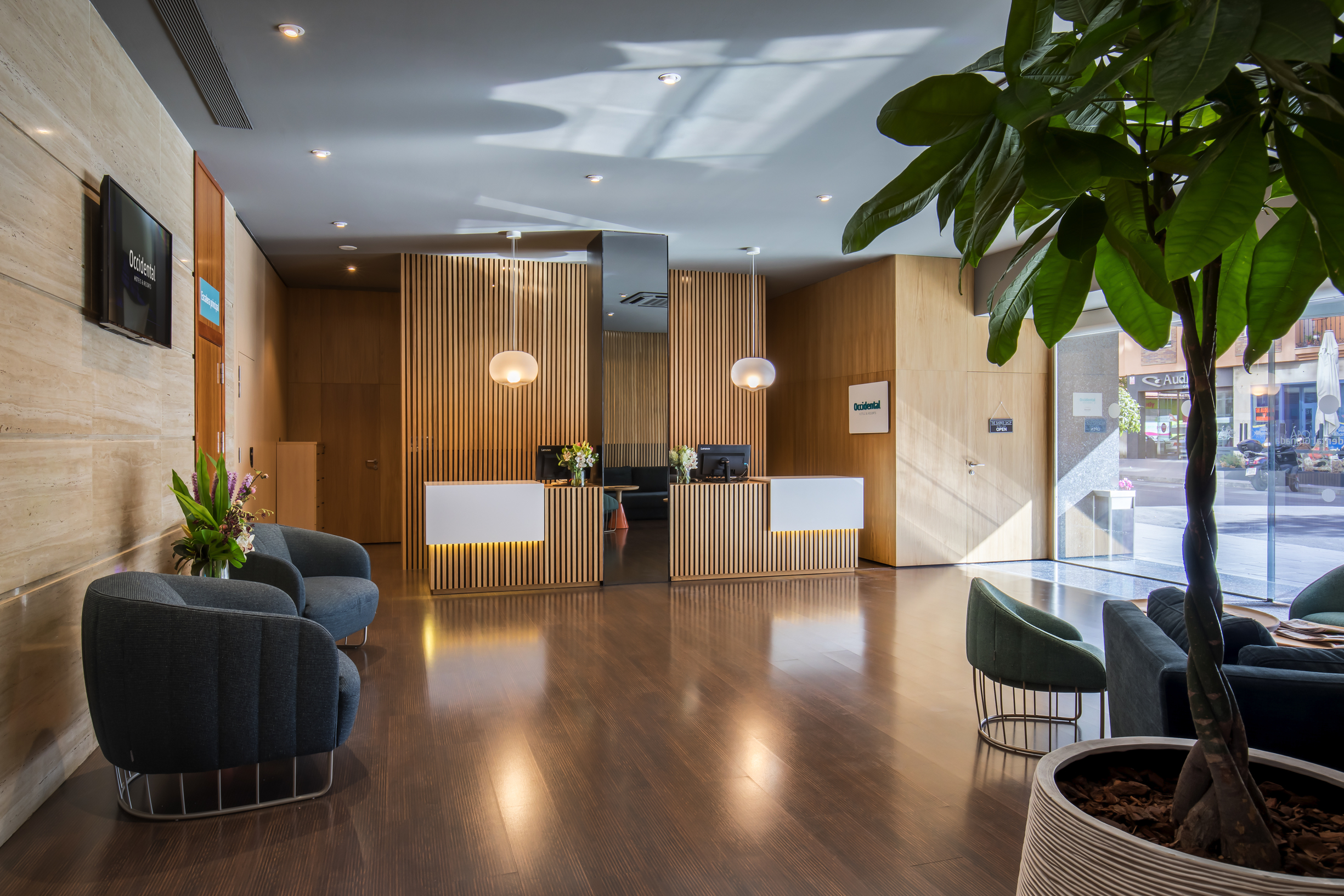Plaza de Bib-Rambla, known as Bibarrambla amongst locals, is one the city’s oldest most ancient and transformed spots. As the first square of the old Medina Garnata in Nasrid times, it has remained intact through the centuries as Granada’s main square, serving as the setting and silent witness of Muslim bazaars, medieval jousts, bullfights, acts of faith, public executions, popular celebrations and Corpus Christi processions. As the centre of social and business activity, Bib-Rambla is the closest thing the city has to a Castilian main square. It currently stands out for its Gigantones Fountain, a permanent flower market that sells an array of varieties, depending on the season, and many restaurants and cafes, where churros with hot chocolate are customary.
Al-Andalus Bib-Rambla: The heart of the medina’s bazaar
The Arabic name of the square hints at its origin: Bib-Rambla (Sand Gate) refers to its proximity to the sandy bank of the Darro River, which at the time flowed openly throughout the medina’s city centre.
Bib-Rambla Gate, located on the wall along the western side of the square, was the main entrance to the lively area where merchants sold their goods in stands. Christians later referred to it as Arco de las Orejas (Arch of the Ears) because it is believed that the mutilated body parts of criminals condemned by justice were put on display here. An interesting fact is that although the gate was disassembled in the last quarter of the 19th century, the architect who restored the Alhambra, Leopoldo Torres Balbás, rebuilt the door in 1933 on the Paseo de las Alamedas that leads to the Nasrid fortress, where it remains today.
Plaza de Bib-Rambla was, without a doubt, an important place due to its proximity to the great mosque and the medina’s commercial hubs, Calle Zacatín—which connects to the square along the east—and Alcaicería, a district with narrow streets. At the time, Zacatín—which in Arabic means ‘clothing market’—was bustling with tailors, shoemakers and dyers, but today it is filled with handicraft and souvenir shops. The same applies to Alcaicería, where Arabs traditionally sold silk and spices. Only the names of some of the side streets (inspired by those artisanal professions) near the square remain today.
The Christian renovation: Bib-Rambla grows following the Reconquista
After conquering Granada, the Catholic Monarchs wanted to transform Plaza de Bib-Rambla into a place of leisure and a social hub. However, the area was too narrow by Spanish standards for their liking and lifestyle, so in the 16th century, the square was renovated and expanded to its current size. As a result, the square became the venue for all types of celebrations, including bullfights, cane tournaments, poetic games, Corpus Christi processions, celebrations and more.It also witnessed more sinister events, such as the acts of faith of the Inquisition, public executions by hanging and mass book burnings. Researchers believe that Francisco Jiménez de Cisneros, the confessor of Queen Isabel, used Plaza de Bib-Rambla to burn 80,000 books from library of the Madrasah of Granada, the city’s first university, by stating that they were all copies of the Koran. In reality, many were merely works written in Arabic.
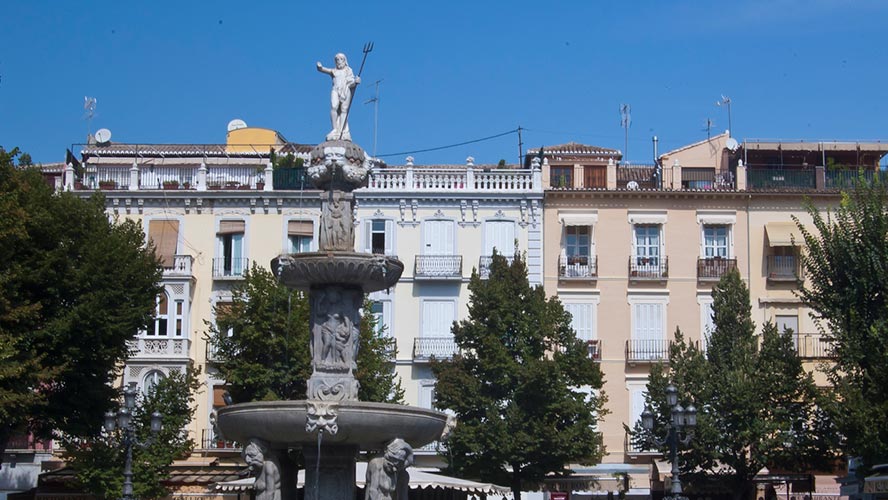
Of all the buildings constructed in the square in the 16th century, the only one that remains standing, on the northeast side, is the former seat of the University of Granada, although today it is the Granada Curia Eclesiástica Arzobispal (the Archbishop’s palace). It was renovated after a fire that occurred on Christmas 1982.
Bib-Rambla in the 21st century: An eclectic space for enjoyment
Although various fires and renovations over the years have changed its appearance, Plaza de Bib-Rambla summarises Granada’s history and reflects something from every period of its past.
In the 21st century—a mere blip in its long life—, the overall appearance has been configured by the imposing mass of the cathedral that peers over rooftops, magnificent iron lampposts from the late 19th century and the monumental Gigantones Fountain, which owes its name to the four monsters with grotesque faces—representing sin—on which the stone cup rests. Taken from the old Monastery of San Agustín following the Ecclesiastical Confiscation of Mendizábal in the 19th century, this fountain was installed in various parts of the city until ultimately reaching this square in 1940.
Today’s visitors prefer to skim over the historic aspects and focus on enjoying the many appeals of Bib-Rambla, such as buying flowers from the stands around the fountain, reading a book under the shade of the lime trees and eating tapas or hot chocolate with churros at one of the many terraces and restaurants.
In December, the square takes on a more intimate feel with Christmas markets and stands selling roasted chestnuts. In late May it is taken over by giants and carnival figures with oversized heads for the Tarasca procession, a celebration of the Corpus Christi Festivities dating back to the era of the Catholic Monarchs. Every year, this famous figure mounted on a winged dragon (La Tarasca) is paraded around Bib-Rambla as an allegory of the triumph of good over evil. The square is filled with carocas, caricatures and limericks that humorously highlight the main events of the year.
In Plaza de Bib-Rambla, a melting pot of cultures, every era has its traditions, customs and people. Many die out and others live on, but they are all reflected in this magical place with a grandiose name, a mirror of Granada’s age-old history.




































































